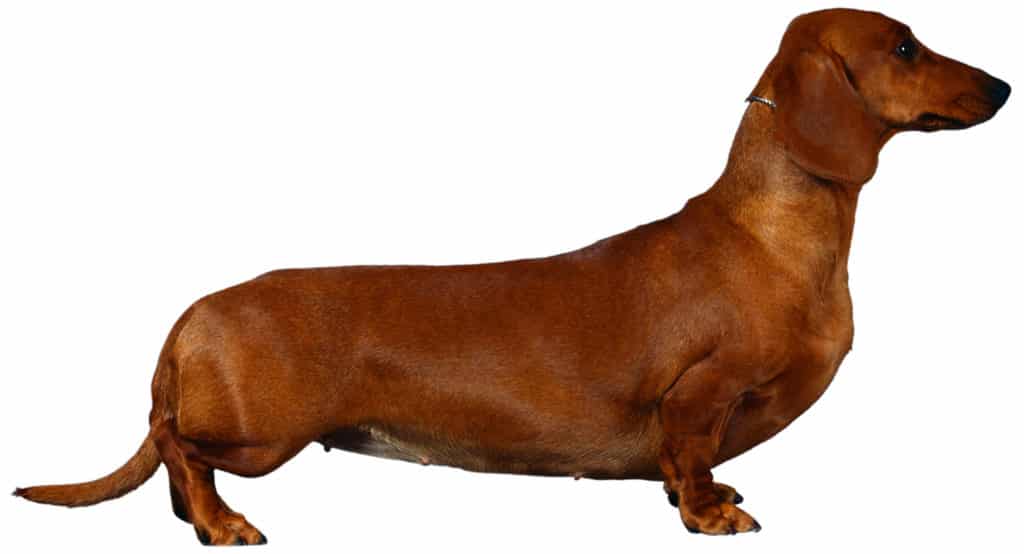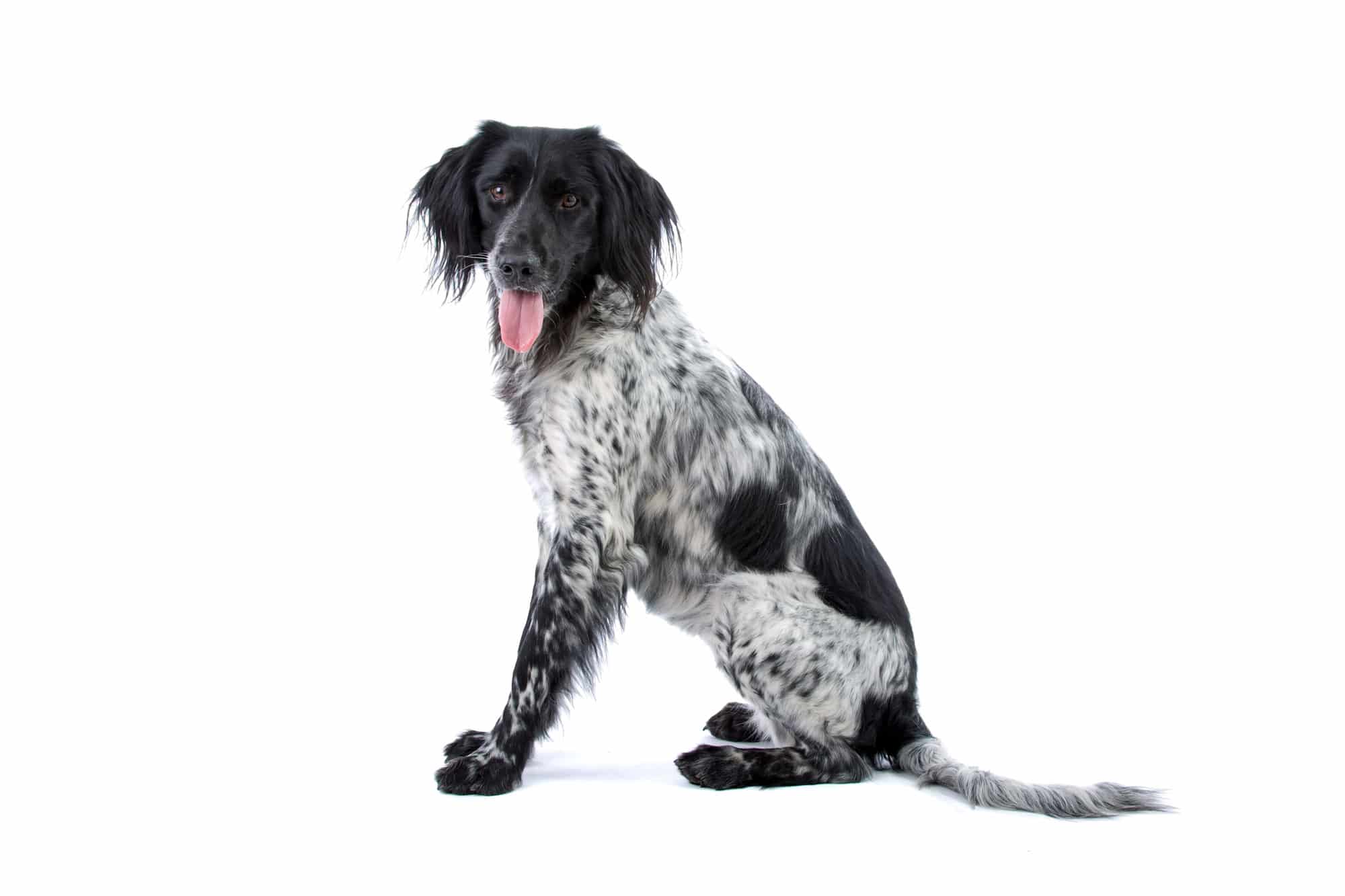Irish Water Spaniel
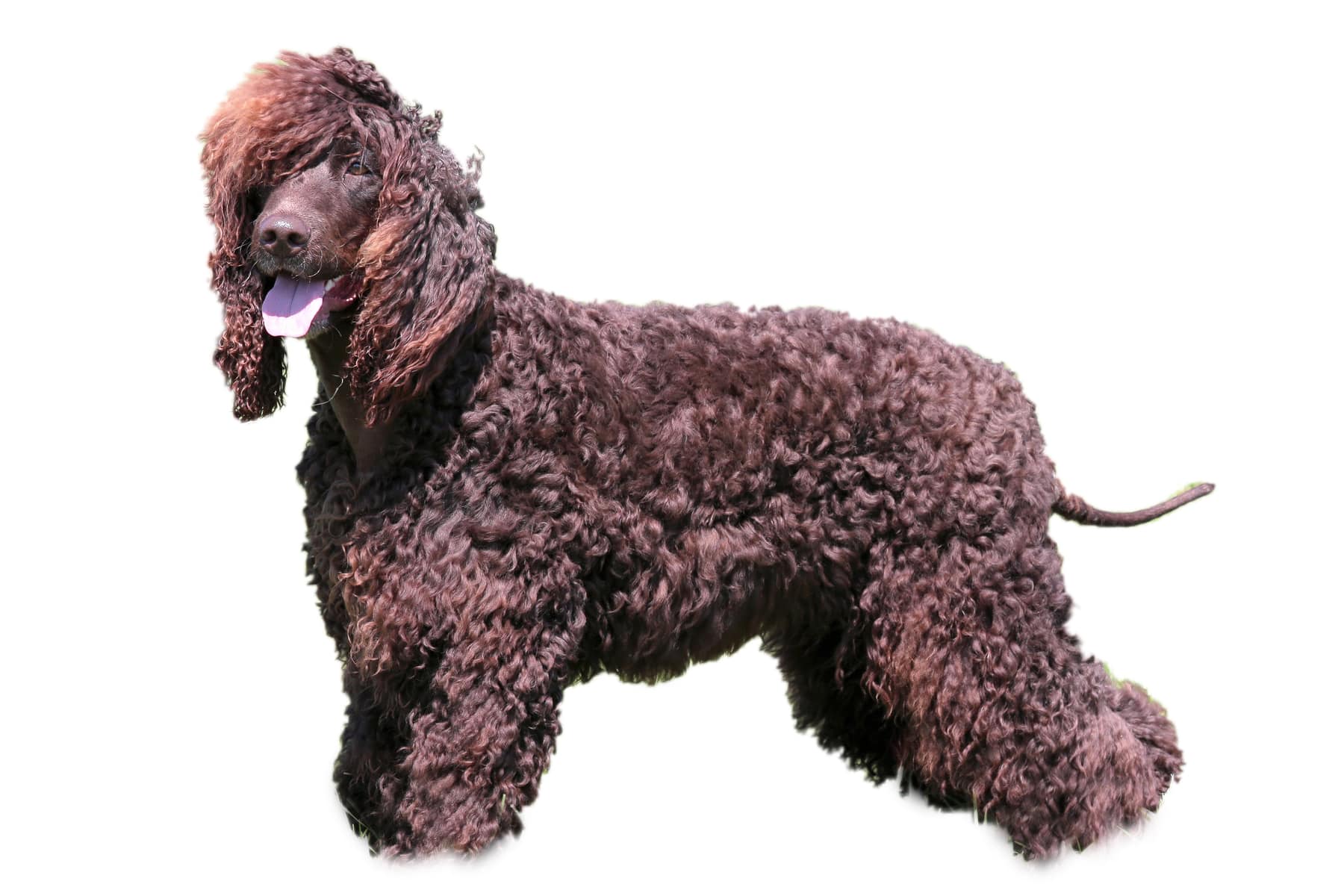
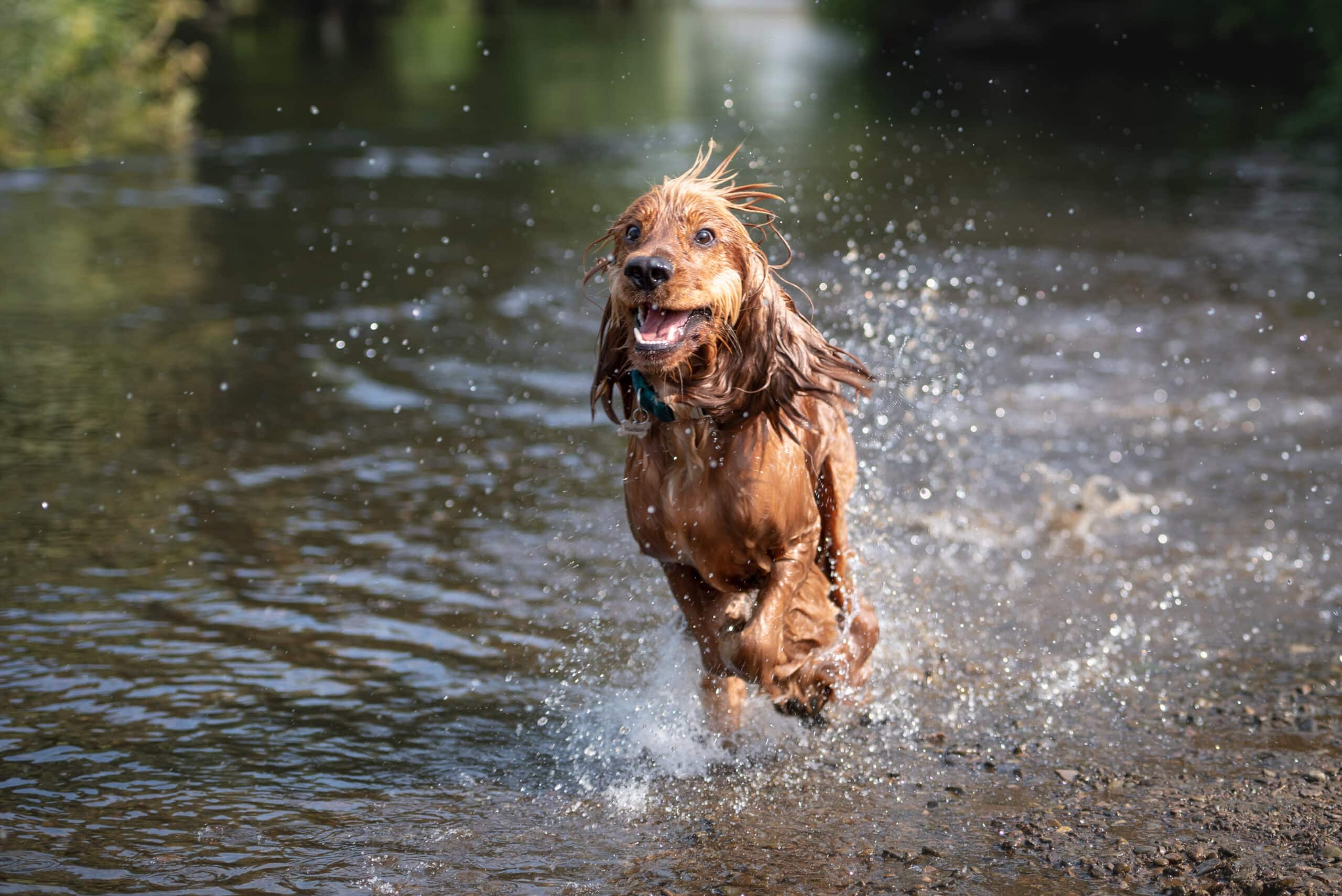
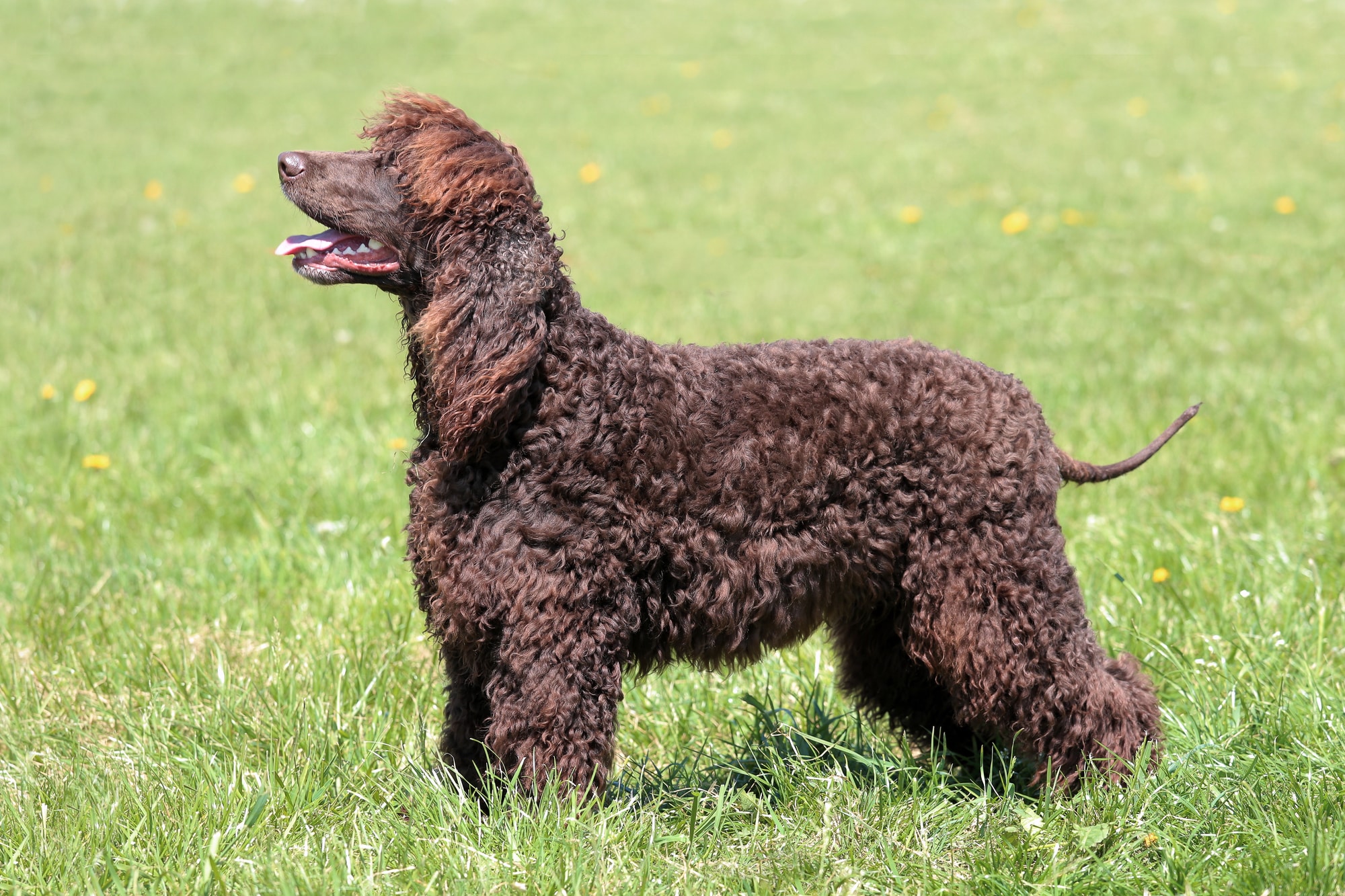
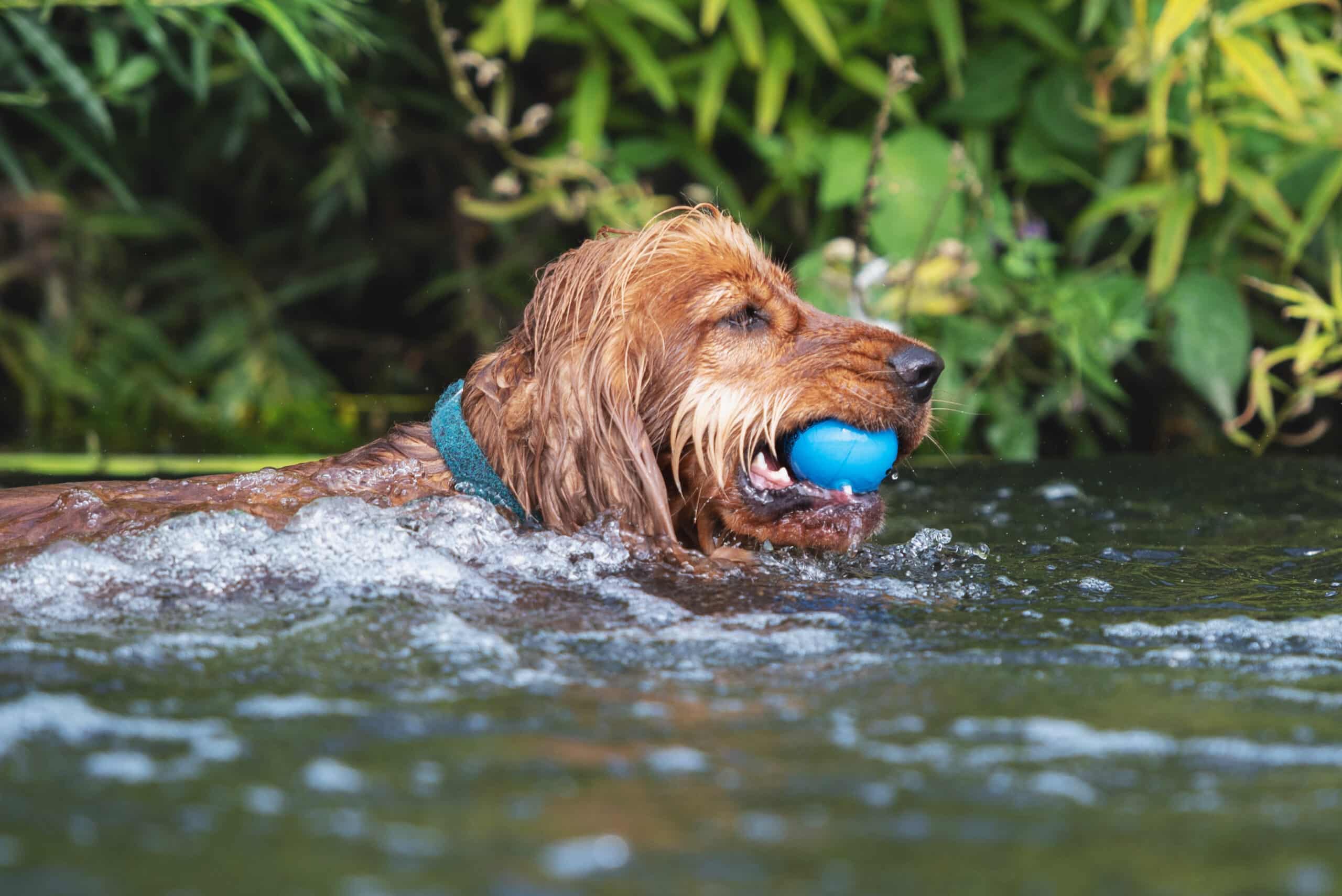
Temperament:
The Irish Water Spaniel - also known as the Irish Water Spaniel - is an Irish dog breed with a lot of personality. It is recognized by the FCI and belongs to Group 8 - Water Dogs. The breed's name already indicates the dogs' close connection to water. The self-confident Irish Water Spaniels have always been known for their hunting spirit and eagerness to work. They are excellent companion dogs for dog lovers with some experience.
Characteristics
The Irish Water Spaniel is one of the larger dog breeds. An adult Irish Water Spaniel reaches a shoulder height of up to 59 cm. Bitches are usually slightly smaller than their male counterparts. They reach an average shoulder height of up to 56 cm. The weight of the four-legged friends is proportional to their size. Male dogs ideally reach a weight of around 27 to 34 kg. Adult bitches weigh around 22 to 29 kg on average.
The Irish Water Spaniel is a visually very striking dog. Its most striking feature is probably its lush, curly coat. This is initially reminiscent of a poodle. The entire body of the Irish Water Spaniel is covered with dense, curly fur.
The coat color is a rich dark brown according to the breed standard. Lighter brown tones up to reddish shades or very dark brown-black tones are also possible.
The thick fur of the four-legged friends is not just a matter of beauty, but serves a purpose. It serves to protect them from cold water temperatures. This is particularly important as the Irish Water Spaniel naturally likes to spend a lot of time in the water.
The build is muscular and compact. The dense coat often makes the animals appear heavier than they actually are. The posture and gait of the four-legged friends appear proud and elegant. The Irish Water Spaniel has large, long floppy ears and expressive eyes. The muzzle is relatively long and protruding.
The tail of the Irish Water Spaniel is another clearly recognizable feature of the breed. Unlike the rest of the body, the tail is not curled. Instead, it is covered with very short, straight hair. The tail immediately catches the eye of the observer. It is thick at the base and becomes thinner towards the bottom. This is why it is often referred to as a rat tail.
The Irish Water Spaniel has a friendly nature. The dogs are loyal and open-minded towards their owner. They build up a close relationship of trust with their owner and their owner's family. The four-legged friends will do anything to protect their family.
They are considered to be extremely alert and ready to defend themselves at all times. Irish Water Spaniels tend to be distant and skeptical towards strangers. Contact with other dogs is generally uncomplicated. However, it is essential that the dogs are socialized at an early age. The Irish Water Spaniel does not show any aggressive tendencies and is therefore very sociable. They are not easily disturbed or provoked.
These striking dogs have a mind of their own and a strong will. They are considered to be self-confident dogs and real bundles of energy. Irish Water Spaniels are also very intelligent animals. They want and need to be challenged so that they don't get bored.
Ideally, the dog is given a task. This helps to provide the animal with species-appropriate exercise. This keeps the four-legged friends balanced and happy. Dogs love the water and are excellent swimmers.
Coat care:
Shedding:
Energy level:
Trainability:
Children suitable:
The right food
The Irish Water Spaniel is considered a robust, hardy and vital dog. The breed is not currently overbred, so most animals are healthy. Nevertheless, there are some typical breed diseases that owners should be familiar with.
Due to their size, dogs are susceptible to hip diseases and complaints. However, these complaints can be prevented through sufficient exercise that is easy on the joints. Cancer is also common in some breeds. Unfortunately, thyroid diseases are also not uncommon. However, many health risks can be avoided by choosing a reputable breeder.
The average life expectancy of the four-legged friends is 12 years. This is reasonable and normal for such a large breed. However, the animals can also live longer if they are in good condition and health.
Nutrition plays an important role in your dog's health. Therefore, when choosing food, make sure that it contains high-quality ingredients, is balanced and meets your dog's needs. Age, size or weight, activity and health status play an important role in this. You should follow the manufacturer's recommendations for the amount of food.
Treats should only be fed in moderation and deducted from the basic diet to avoid obesity.
Puppies can be fed 4-6 times a day. The number of meals should be gradually reduced to 2 per day until the dog is fully grown. A rest period should be observed after meals.
Fresh drinking water should be available at all times.
Health & Care
The Irish Water Spaniel is somewhat more demanding to keep than other breeds. It is not so suitable as a beginner's dog. Instead, the future owner should already have experience in dog training. However, it is important that training begins as early as puppyhood.
As these four-legged friends are considered stubborn and temperamental, boundaries and rules must be established at an early age. A loving but consistent upbringing and a clear hierarchy are necessary. Otherwise the animals will always try to get their own way.
Good socialization of dogs is also very important. This is best achieved by regular attendance at a dog school. There, spaniels learn how to interact with other dogs.
Grooming requires special attention and time. The Irish Water Spaniel should have regular contact with water. Extensive swimming sessions or baths in the bathtub at home are good for the coat. At the same time, the four-legged friends enjoy any contact with water.
In addition, dogs' curly coats should be cut or clipped approximately every 2 to 3 months. This can be done in a dog grooming salon, for example.
Thick coats should also be brushed regularly. This effectively removes dirt and prevents the coat from matting. It is also important to check the coat regularly for ticks. These are usually not visible at first glance.
Eyes and ears should also be checked regularly and kept clean.
Suitable accessories
The Irish Water Spaniel loves the outdoors. That is why it does not feel at home in the city. Furthermore, the dogs should not be kept in a small rented apartment. Due to their size alone, the animals need enough space.
As the Irish Water Spaniel is a very energetic and playful dog, you should purchase sufficient dog toys. Retrieving games are particularly popular with these lively four-legged friends. Balls or other throwing toys are therefore particularly suitable.
The four-legged friends should also have their own place to sleep in the house. This is important so that the animals can recharge their batteries and relax.
The animals' preference for water should also be taken into account. Regular trips to nearby lakes or rivers are therefore advisable. In general, the Irish Water Spaniel can and wants to be outside in all weathers. The future owner should be aware of this.
Other accessories that are part of the basic equipment: collar or harness with lead, water and food bowl, tick tweezers, claw clippers, mild dog shampoo, brush and comb, toothbrush and toothpaste for dogs, transport box for transportation in the car and a first aid kit. Ask your vet what belongs in the first aid kit.
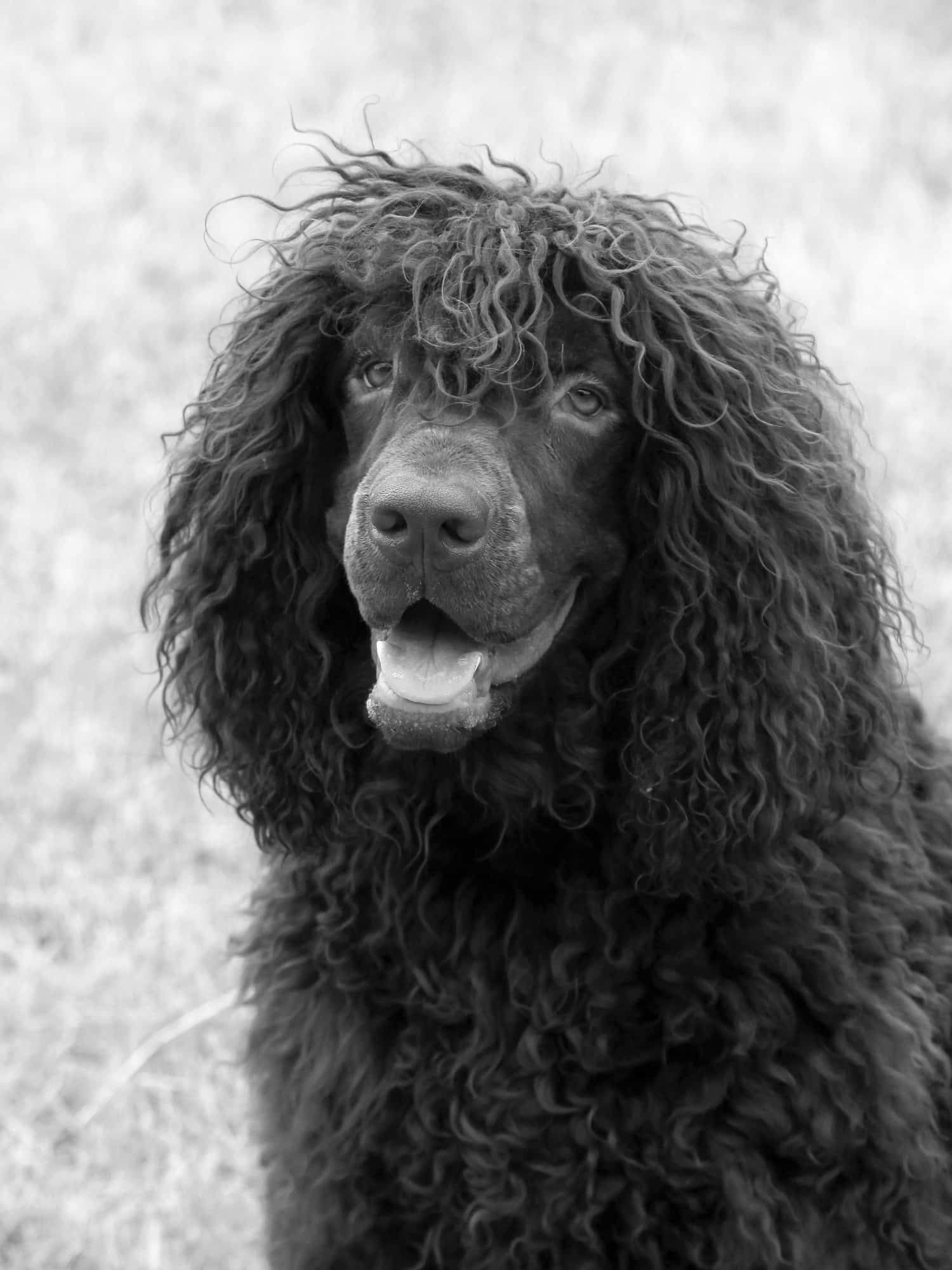
Origin & History
The Irish Water Spaniel is a very old breed of dog. It originally comes from Ireland. The so-called water dogs were admired early on for their strong hunting instinct and courage. They are excellent hunters and hard-working working dogs.
The exact ancestry of the breed has not yet been clearly established. What is certain, however, is that the dogs are closely related to the Poodle and the Portuguese Water Dog. The breed became increasingly popular with hunters in particular.
Targeted breeding of the Irish Water Spaniel began in the 1830s. In 1862, the breed was officially recognized by the British Kennel Club.
The breed was finally recognized by the FCI in 1954.
In Germany, the Irish Water Spaniel is still largely unknown. Some lovers of the breed actively support its breeding. Nevertheless, this interesting spaniel is not very common in Germany.

